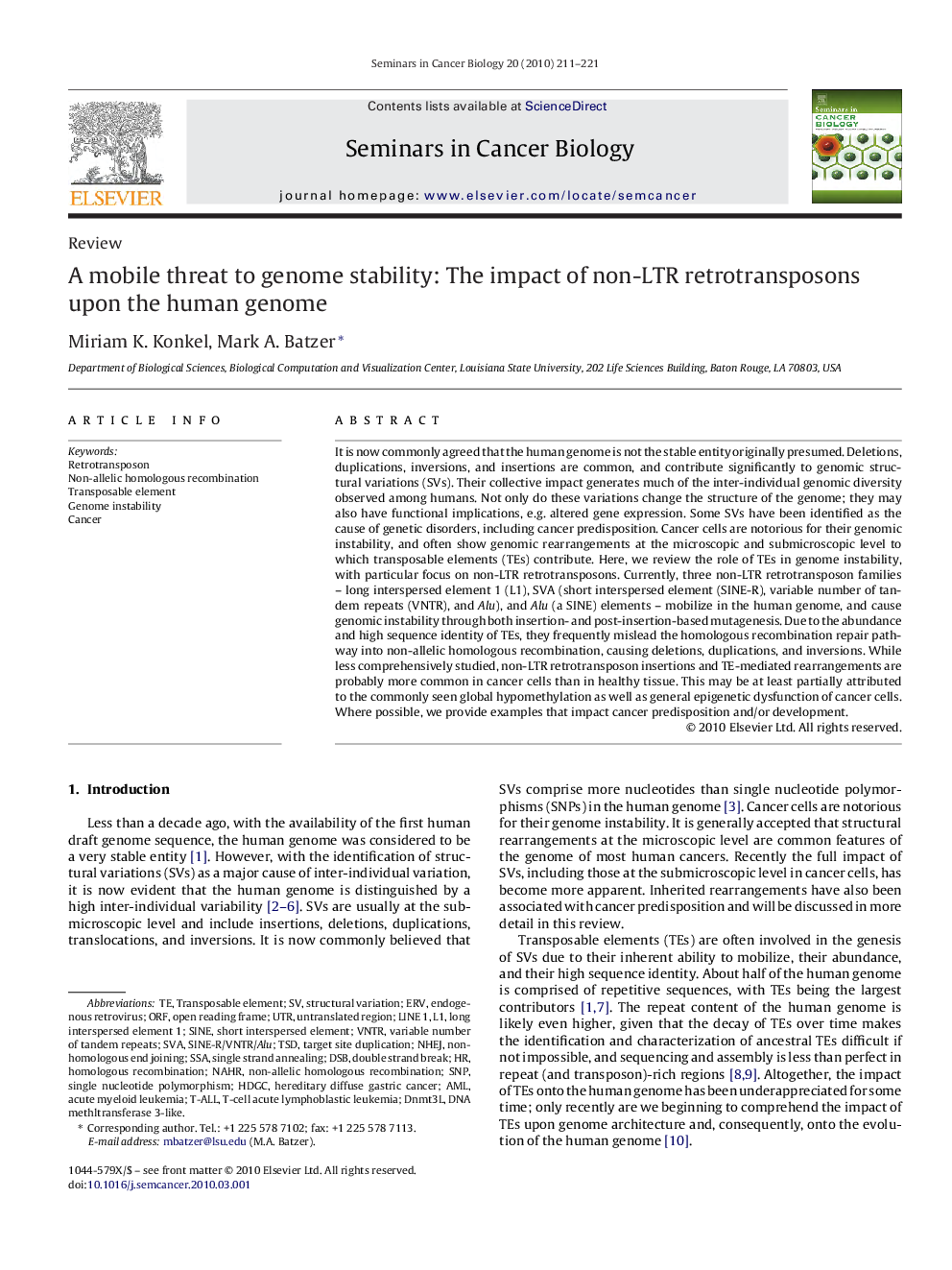| کد مقاله | کد نشریه | سال انتشار | مقاله انگلیسی | نسخه تمام متن |
|---|---|---|---|---|
| 2023965 | 1069832 | 2010 | 11 صفحه PDF | دانلود رایگان |

It is now commonly agreed that the human genome is not the stable entity originally presumed. Deletions, duplications, inversions, and insertions are common, and contribute significantly to genomic structural variations (SVs). Their collective impact generates much of the inter-individual genomic diversity observed among humans. Not only do these variations change the structure of the genome; they may also have functional implications, e.g. altered gene expression. Some SVs have been identified as the cause of genetic disorders, including cancer predisposition. Cancer cells are notorious for their genomic instability, and often show genomic rearrangements at the microscopic and submicroscopic level to which transposable elements (TEs) contribute. Here, we review the role of TEs in genome instability, with particular focus on non-LTR retrotransposons. Currently, three non-LTR retrotransposon families – long interspersed element 1 (L1), SVA (short interspersed element (SINE-R), variable number of tandem repeats (VNTR), and Alu), and Alu (a SINE) elements – mobilize in the human genome, and cause genomic instability through both insertion- and post-insertion-based mutagenesis. Due to the abundance and high sequence identity of TEs, they frequently mislead the homologous recombination repair pathway into non-allelic homologous recombination, causing deletions, duplications, and inversions. While less comprehensively studied, non-LTR retrotransposon insertions and TE-mediated rearrangements are probably more common in cancer cells than in healthy tissue. This may be at least partially attributed to the commonly seen global hypomethylation as well as general epigenetic dysfunction of cancer cells. Where possible, we provide examples that impact cancer predisposition and/or development.
Journal: Seminars in Cancer Biology - Volume 20, Issue 4, August 2010, Pages 211–221